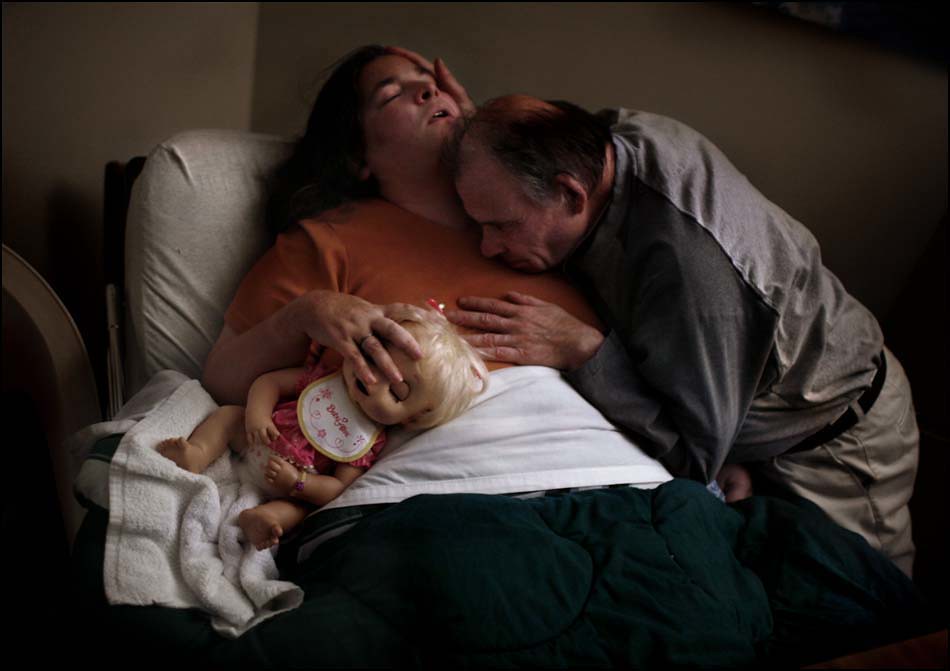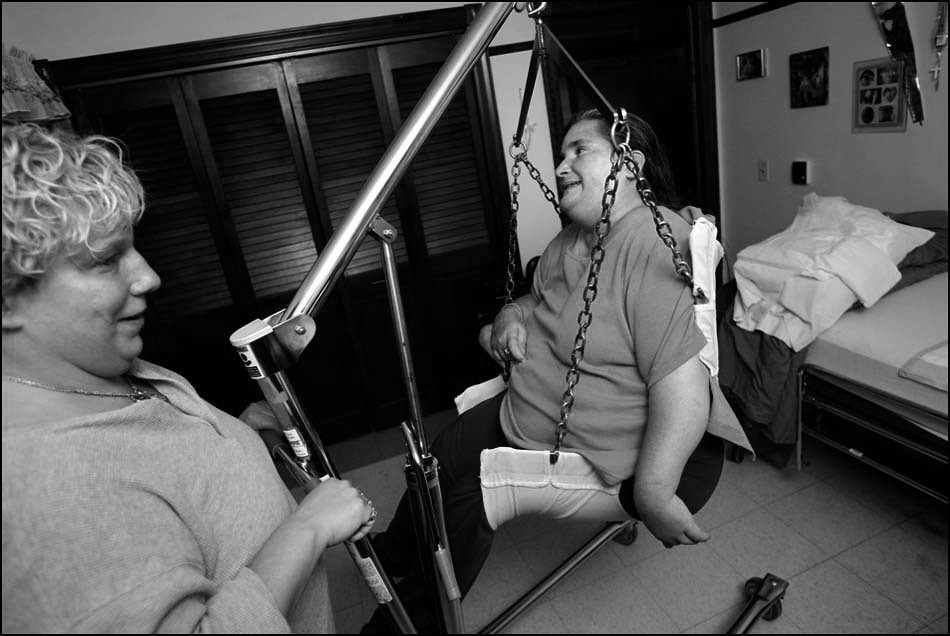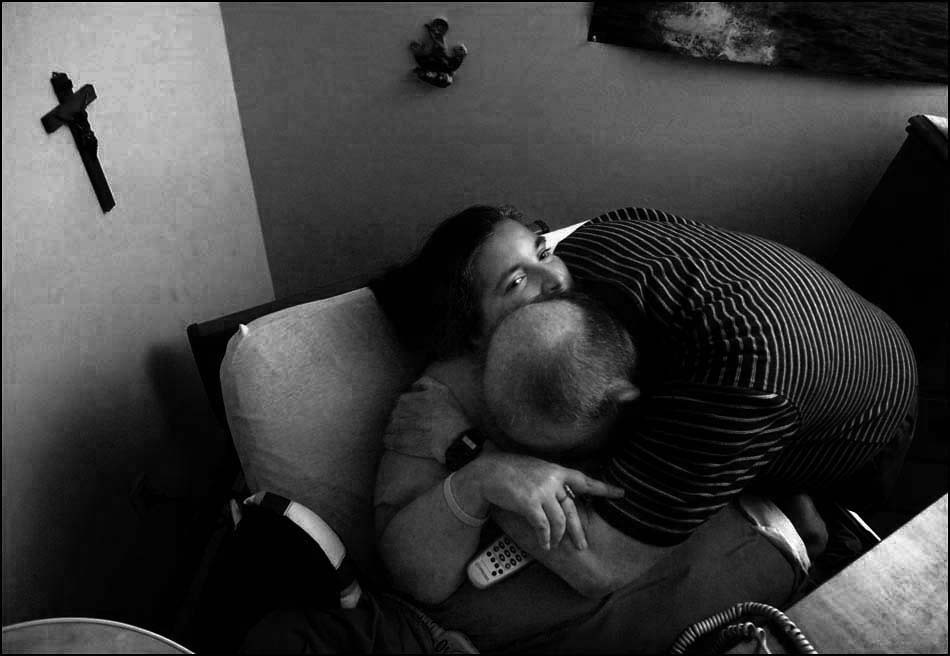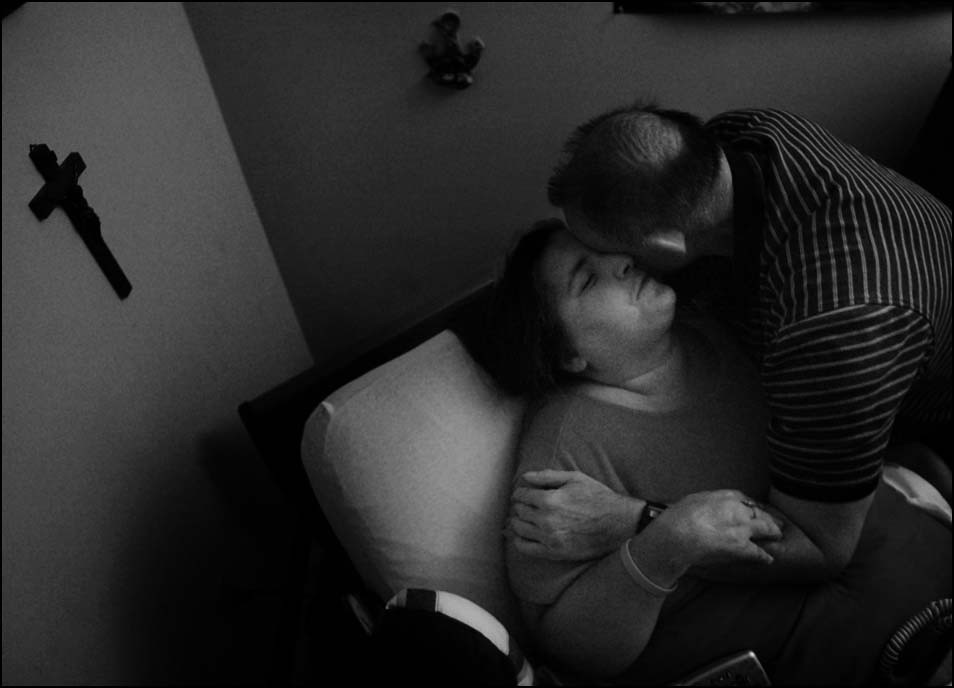
Expectations.
It's not just the thought that, yes, sooner or later Lady Gaga
will go away, or that surely your ex will give you another chance
(no, it wasn't them - it really was you).
Expectations are something we hold in our mind, both towards
our own behavior, as well as others. We carry them with us each
day, yet rarely do we think about the psychological application
to photojournalism.
Lets study an example of expectation for a moment.
I recently took a trip and needed to fly quite early in the morning.
Because I'm a cheap bastard and wanted to avoid paying for parking,
I asked my housemate to take me to the airport. He's a prince of a
guy, I tell you, and he agreed.
So, the expectation was set.
Think about it for a moment. Normally this guy doesn't wake till
nine, and yet he's willing to wake four hours earlier to take me to the airport.
Why?
It's not just because we're good friends, nor is it because I would
do the same for him. It's simply because the expectation was set.
I know this is a silly example of someone's generosity, but it's also
an excellent example to illustrate the point.
In photojournalism, how often do we set up expectations? Too often
we just tell people, “Oh ignore me, I'll just be a fly on the wall.”
Sometimes that works, sometimes it doesn't. I think sometimes it's
important to set expectations, and then become a fly on the wall.
Lets examine this picture above.
It's made from a photo story I did on a disabled couple who was
planning on getting married in a year. He was blind and she has
cerebral palsy. I thought their story was amazing and I wanted to
document their relationship through the wedding.
I wanted to set a high level of intimacy right away, instead of working
up to it, so I told them to tell their story in a compelling manner, I'd
need access to many aspects of their life, including the bedroom.

They agreed and said that each night before they went to bed, they did
something called “hiding” where they would cuddle with each other and
“hide” from the difficulties of life. I thought this was stunningly beautiful
and told them I'd like to document it.
They agreed and the expectation was set – the expectation that I would
have access to some of the most intimate moments from the beginning.
By setting this early, it set the stage for a higher level of intimacy throughout
my year with them. So, the second time I photographed them, I was already
witnessing something very private, very compelling.
The following frames are some of the first I made of them during the year-long
documentary project:

Sometimes this isn't possible, I understand, but I do think it's more possible
than we often realize. By laying out your purpose and expectations to people,
I think people actually trust you more and are more willing to give access.
Plus, once it's laid out and agreed upon, these expectations become the reality
of a relationship.



These images, and these moments, led to the image we're featuring, made
on Christmas day. The boyfriend gave her a "Baby Alive Doll," a baby that
they could take care of together, since the two couldn't have children of
their own.
It's because of the groundwork laid out at the beginning of the
project that this image was possible. It was one of the most magical
moments I've ever witnessed.

In conclusion, think about expectations in your life and how it shapes your
lifestyle. How can it apply to your work, your approach to people you document?
On a side note, I want to thank Theresa and Tom for letting me document them
for that year. Tom has since passed away, and my time with them is something
I will always be grateful for, both as a photojournalist, and a person.
+++++
Next week on TID, we'll take a look at this image by Scott Strazzante, who is
a staff photographer with The Chicago Tribune:

As always, if you have a suggestion of someone, or an image you
want to know more about, contact Ross Taylor and Logan Mock-Bunting at:
[email protected]
[email protected]